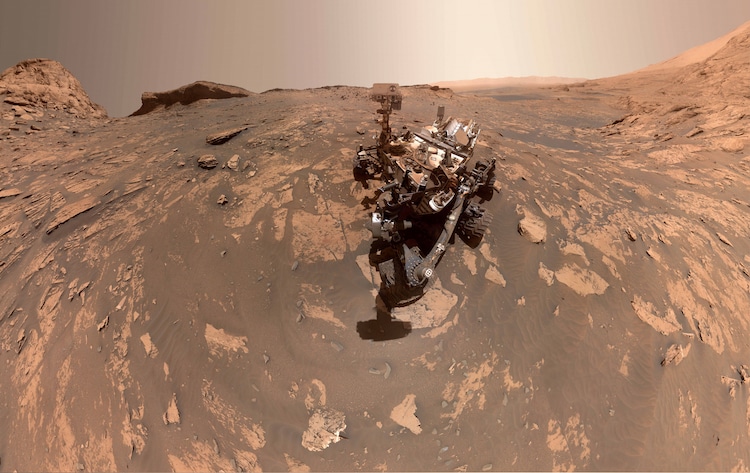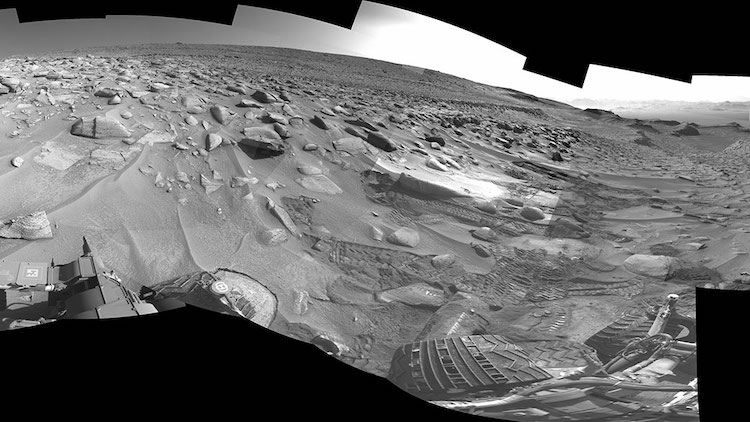
Curiosity takes a selfie on Mars. (Photo: NASA/JPL-Caltech/MSSS)
Just keep climbing, climbing. That could be the Mars rover’s motto. Known as Curiosity, the vehicle has been exploring the area of Gale Crater on the Red Planet. This 3.5-billion-year-old crater once held water, and from its center rises Mount Sharp, a 3.4-mile-tall hill. Curiosity’s photographs and data have been universe-changing for astronomers. Despite her age, Curiosity keeps climbing up the mountain to reach new heights of learning and new spectacular views.
Curiosity landed on Mars in 2012 and has been trekking through the red dusty landscape for over a decade. In September 2014, the rover left behind her landing area to climb the mountain, which is technically known as Aeolis Mons. Climbing brings a series of technical challenged. Dusty sand and large rocks are hazards. The area around the rover must be surveilled each day by researchers who identify potential traps and dangers which could flummox the valuable vehicle. These researchers relay their concerns and desires to a team of “drivers.” In fact, they do not use any joystick or controls, but rather code instructions for the robot to follow each day. Even without these instructions, if the rover detects something risky, it shuts down immediately. This is called a “fault.”
There were frequent faults climbing the difficult terrain of the mountain. Sometimes detours were necessary. In recent weeks, the rover has explored the Jau region. This area has many tiny craters which were created by fragmented asteroid impacts. Scientists want to know more about these. Curiosity can use her drill or robotic arm—equipped with a camera—to learn more about her surroundings, then send all her data to Earth.
As far as she has climbed, Curiosity still has a long way to go. She snapped this image looking up at the mountain in 2019. Given that Curiosity moves at an average pace of 98 feet an hour, her trip up the mountain even this far is an incredible journey.
For almost a decade, the Curiosity Mars rover has been trekking up Mount Sharp, a mountain located within the 96-mile-wide Gale Crater on the planet’s surface.

The view of Mount Sharp. (Photo: NASA/JPL-Caltech/MSSS)
Since 2012, the Mars rover has been exploring the region and steadily climbing to new heights.

An image by Curiosity. (Photo: NASA/JPL-Caltech)
A team of “drivers” and researchers must be extremely careful with the precious vehicle, which “faults” when it detects danger.
h/t: [NASA Space Flight]
Related Articles:
Four Volunteers Entered NASA’s Mars Simulation Where They Will Live for Over a Year
First-Ever Mom and Daughter Pair Go to Space Together
NASA Picks Up “Heartbeat” Signal and Reconnects With Lost Voyager 2
ESO Unveils Incredible Photo Revealing How Giant Planets Are Formed
